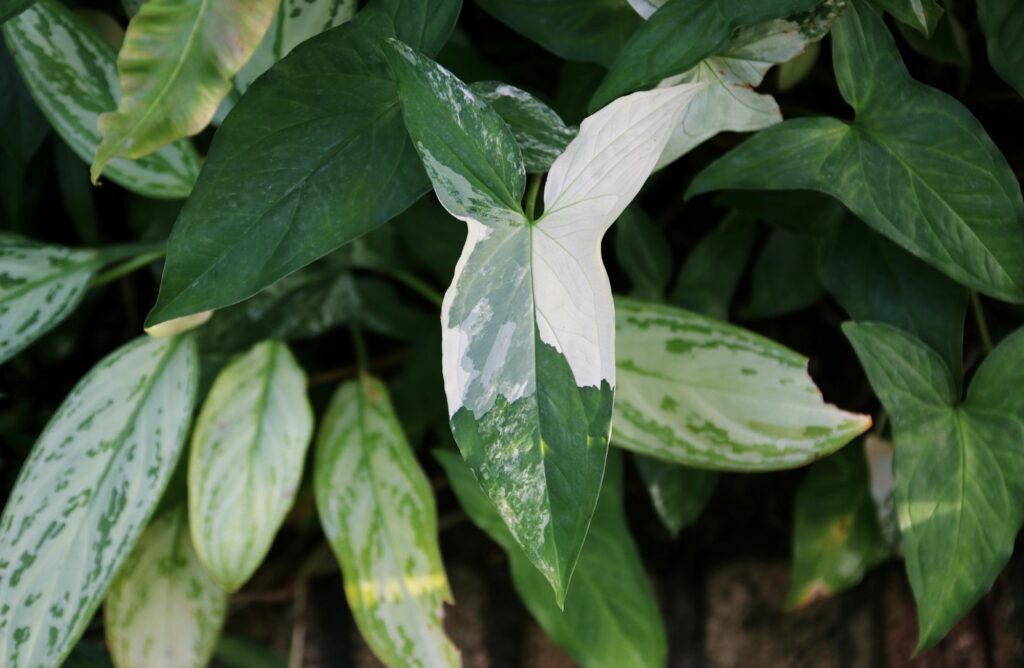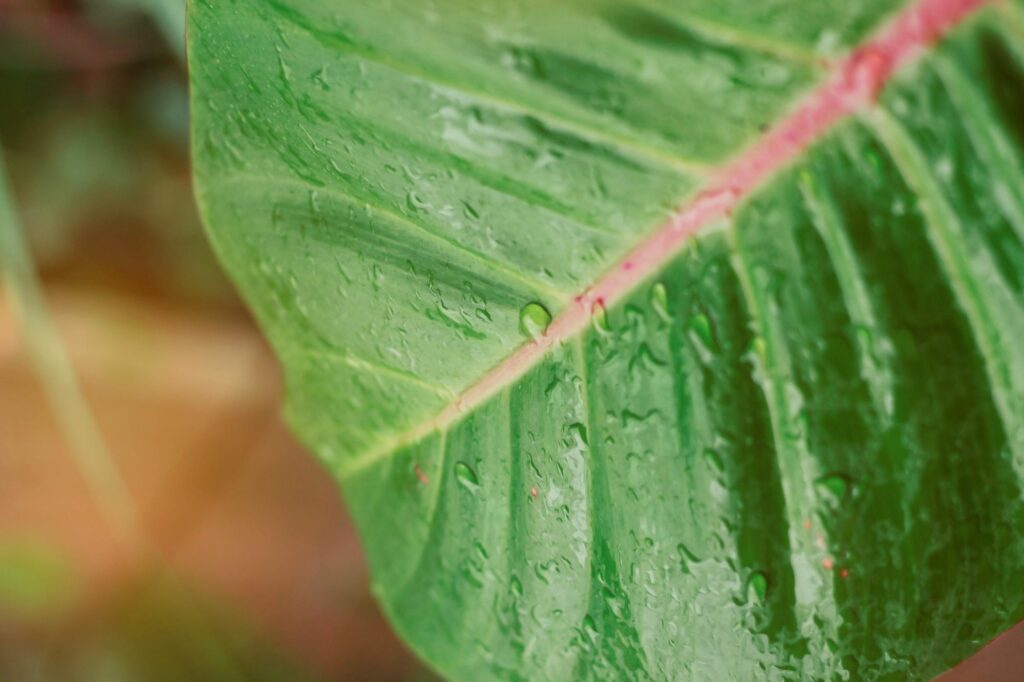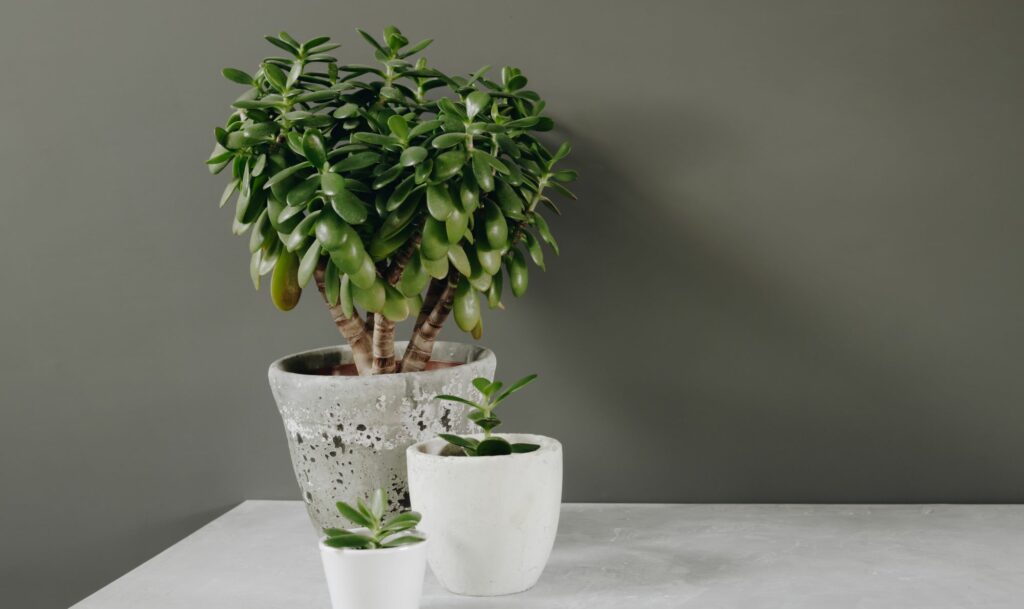Plants are covered by a waxy layer that protects them from environmental factors such as water loss, UV radiation, and pathogens. This layer is known as the plant cuticle and is composed of a complex mixture of lipids and waxes. The cuticle is secreted by the epidermal cells of the plant and is found on all aerial surfaces of the plant, including leaves, stems, and flowers.
The waxy covering on plant leaves is an essential adaptation that allows plants to survive in a wide range of environments. The thickness and composition of the cuticle vary depending on the plant species and the climate in which it grows.
In arid environments, plants have thicker and more extensive cuticles to prevent water loss, while in wetter environments, the cuticle may be thinner to allow for gas exchange. Understanding the role of the waxy covering on plant leaves is crucial for plant biologists, ecologists, and farmers.
Key Takeaways
- The waxy covering on plant leaves is known as the plant cuticle and is composed of a complex mixture of lipids and waxes.
- The thickness and composition of the cuticle vary depending on the plant species and the climate in which it grows.
- The waxy covering on plant leaves is an essential adaptation that allows plants to survive in a wide range of environments.
Don’t miss these other interesting articles!
The Importance of Water for Plant Growth
What is the Largest Group in the Plant Kingdom?

Understanding Plant Cuticle
The waxy covering on plant leaves is known as the cuticle. It is a thin, protective layer that covers the outer surface of the epidermis, which is the outermost layer of cells in the plant. The cuticle is composed of a mixture of lipids, including waxes and cutin.
The primary function of the cuticle is to reduce water loss from the plant. It does this by forming a barrier that prevents water from evaporating from the surface of the leaf. The cuticle also helps to protect the plant from environmental stresses, such as extreme temperatures, UV radiation, and pathogens.
The thickness and composition of the cuticle can vary depending on the plant species and the environment in which it grows. For example, plants that grow in arid environments often have thicker cuticles to help them retain water. In contrast, plants that grow in wet environments may have thinner cuticles to allow for greater gas exchange.
The cuticle can also play a role in plant defense against herbivores. Some plants produce specialized chemicals that are stored in the cuticle and deter herbivores from feeding on the plant. In addition, some plants have specialized structures, such as trichomes, that are located on the surface of the cuticle and can physically impede herbivores.
What is the Waxy Covering on Plant Leaves
The waxy covering on plant leaves is a complex mixture of compounds that serve to protect the plant from various environmental stresses. The composition of the waxy covering can vary depending on the plant species, the age of the leaf, and the environmental conditions in which the plant is growing.
The waxy covering is primarily composed of two main types of compounds: waxes and cutin. Waxes are complex mixtures of long-chain fatty acids, alcohols, and esters that are synthesized by the plant and secreted onto the surface of the leaf.
Cutin, on the other hand, is a polymer of hydroxy fatty acids that is synthesized by the plant and deposited in the cell walls of the epidermis.
Cuticular wax is known to be largely composed of compounds which derive from very-long-chain fatty acids (VLCFAs), such as aldehydes, alkanes, ketones, and esters.
The most common constituents of epicuticular wax are predominantly straight-chain aliphatic hydrocarbons that may be saturated or unsaturated and contain a variety of functional groups, such as – hydroxyl, carboxyl, and – ketoyl at the terminal position.
The waxy covering may also contain other compounds, such as triterpenoids and pentacyclic triterpenoids. These compounds are synthesized by the plant and may serve to provide additional protection against environmental stresses such as UV radiation and insect predation.

Role of the Waxy Covering in Plants
The waxy covering found on the leaves of plants is known as the cuticle. It is a hydrophobic layer that consists of an insoluble membrane submerged in solvent-soluble waxes.
The cuticle is a protective layer that covers the leaves and separates them from the environment. It is composed of cutin, a wax-like material produced by the plant that is chemically a hydroxy fatty acid.
One of the primary roles of the waxy covering is to help the plant retain moisture. The cuticle provides a physical barrier that prevents water loss from the leaf surface. This is particularly important for plants growing in arid regions where water is scarce. The cuticle also regulates transpiration and facilitates the transport of gases and solutes.
The cuticle is essential for photosynthesis. It helps to maintain the optimal moisture level within the leaf, which is necessary for the efficient functioning of the chloroplasts.
The chloroplasts are the organelles responsible for photosynthesis. Without the cuticle, the leaf would lose moisture rapidly, leading to dehydration and reduced photosynthetic efficiency.
The cuticle is also important for gas exchange. The stomata, which are small openings on the leaf surface, are responsible for gas exchange. The waxy cuticle helps to regulate the opening and closing of the stomata, which is necessary for efficient gas exchange.
The guard cells, which surround the stomata, regulate their opening and closing. The waxy cuticle provides a physical barrier that prevents excessive moisture loss through the stomata.
The thickness of the waxy cuticle varies among different plant species. Aquatic plants, for example, have a thinner cuticle because they do not need to conserve water as much as terrestrial plants. The cuticle also varies in thickness among different parts of the plant. Leaves, for example, have a thicker cuticle than stems.
In addition to the cuticle, some plants have small hairs called trichomes on their leaf surface. Trichomes help to avert herbivory by restricting insect movements or by storing toxic or bad-tasting compounds.
Adaptations in Different Climates
Plants have evolved various adaptations to survive in different climates. The waxy covering on plant leaves, also known as the cuticle, is one such adaptation that helps plants survive in arid regions.
In hot and dry climates, such as deserts, plants face the challenge of retaining water. Succulent plants, such as cacti, have adapted to store water in their thick, fleshy stems and leaves. The waxy cuticle on their leaves also helps to prevent water loss through transpiration.
Conifers, on the other hand, are adapted to survive in cold and dry climates. They have needle-like leaves that are covered in a thick waxy layer, which helps to reduce water loss and protect them from freezing temperatures.
Plants in tropical rainforests face different challenges. They have adapted to thrive in high humidity and frequent rainfall. Some plants have broad, flat leaves to capture as much sunlight as possible, while others have developed leaves with a waxy coating to prevent excess water absorption.
In addition to adapting to different climates, plants can also adjust their behavior to survive in changing conditions. For example, some plants can adjust their leaf angle to minimize exposure to the sun and reduce water loss.

Impact of Soil and Water Availability
The waxy covering on plant leaves, known as the cuticle, plays an important role in protecting the plant from water loss. The amount of water that a plant loses through transpiration depends on several factors, including soil type, water availability, and the permeability of the cuticle.
Soil texture and water availability can influence the biogeochemical processes in the soil and the ability of plants to take up water. A study by Nature found that soil texture and environmental conditions can influence the biogeochemical processes that occur in the soil, which in turn can affect the water-holding capacity of the soil.
Water vapor is constantly lost from the leaves of plants through the stomata, small pores on the leaf surface. The cuticle helps to reduce the amount of water lost by slowing down the rate of water vapor diffusion through the leaf surface. The thickness of the cuticle can vary depending on the plant species and environmental conditions.
In addition to soil texture and water availability, the permeability of the cuticle can also affect the amount of water lost by the plant. The cuticle is composed of a waxy material called cutin, which is produced by the plant. The thickness and composition of the cuticle can vary depending on the plant species and environmental conditions.
Hydraulic failure can occur when a plant loses too much water through transpiration and is unable to take up enough water to replace the lost water. This can lead to wilting and even death in extreme cases. The cuticle helps to prevent hydraulic failure by reducing the amount of water lost through transpiration.
Plants with Notable Waxy Coverings
Many plants have a waxy covering on their leaves, stems, and fruit. This covering is called the cuticle and is composed of cutin, a wax-like material produced by the plant that is chemically a hydroxy fatty acid. The purpose of this covering is to help the plant retain water, especially in arid regions.
Ficus
Ficus is a genus of over 800 species of woody trees, shrubs, and vines commonly called figs. Many species of Ficus have a notable waxy covering on their leaves. One such species is the Rubber Fig Tree (Ficus elastica), which has thick, glossy leaves that are covered in a waxy cuticle. The waxy coating helps the leaves retain moisture and protects them from environmental stressors.
Hoya
Hoya is a genus of about 200 species of tropical plants in the family Apocynaceae. Hoya carnosa, also known as the Wax Plant, is a popular houseplant with thick, waxy leaves that help it retain moisture. The leaves of some Hoya species are covered in a powdery wax that gives them a frosted appearance.
Crassula
Crassula is a genus of succulent plants in the family Crassulaceae. Many species of Crassula have a waxy coating on their leaves that helps them retain moisture. The most well-known species of Crassula is the Jade Plant (Crassula ovata), which has thick, fleshy leaves covered in a waxy cuticle.
Wheat and Rice
Wheat and rice are two of the most important cereal crops in the world. Both plants have a waxy coating on their leaves and stems that helps them retain water and protect them from environmental stressors. The waxy coating on rice leaves is especially important for preventing water loss in flooded rice paddies.
Terrestrial Plants
Terrestrial plants, or plants that grow on land, often have a waxy cuticle on their leaves and stems. This is especially true for plants that grow in arid regions, where water is scarce. The waxy cuticle helps these plants retain moisture and protect them from environmental stressors like heat and wind.
Bromeliad
Bromeliads are a family of tropical plants that includes over 3,000 species. Many species of bromeliads have a waxy coating on their leaves that helps them retain moisture. The leaves of some bromeliads are covered in a powdery wax that gives them a frosted appearance.
Pothos
Pothos is a genus of about 20 species of tropical plants in the family Araceae. Pothos plants are popular houseplants with thick, waxy leaves that help them retain moisture. The leaves of some Pothos species are covered in a powdery wax that gives them a frosted appearance.
Aloe Vera
Aloe vera is a succulent plant species of the genus Aloe. It has thick, fleshy leaves covered in a waxy cuticle that helps it retain moisture. The waxy coating on aloe vera leaves also protects them from environmental stressors like heat and wind.

Waxy Covering as a Defense Mechanism
The waxy covering on plant leaves, also known as the cuticle, serves as a protective barrier against various environmental factors, including UV radiation and pests. The cuticle is composed of cutin, a wax-like material produced by the plant that is chemically a hydroxy fatty acid.
One of the primary functions of the cuticle is to reduce the rate of water loss from the leaf surface. This is especially important in arid regions where water is scarce. The waxy layer on the adaxial surface of the leaf also helps to reflect sunlight, reducing the amount of heat absorbed by the leaf.
In addition to its role in preventing water loss and regulating temperature, the cuticle also serves as a defense mechanism against herbivory. Many plants produce leaves with a thick cuticle to deter herbivores from consuming them. For example, Quercus coccifera, a species of oak tree, produces leaves with a thick cuticle that protects them from herbivores.
The lotus effect, which is the ability of the lotus plant to repel water and prevent dirt and other particles from sticking to its leaves, is another example of the protective properties of the cuticle. The lotus effect is achieved through the presence of microscopic wax crystals on the surface of the leaf, which create a hydrophobic barrier that repels water and other particles.
Studying the Waxy Covering
The waxy covering on plant leaves is called the cuticle. It is composed of cutin, a wax-like material produced by the plant that is chemically a hydroxy fatty acid. The purpose of this covering is to help the plant retain water, especially in arid regions. The cuticle is present on the leaves, young stems, and fruit of plants.
Studying the waxy covering on plant leaves can provide insights into plant physiology and differences between plant species. Scanning electron microscopy can be used to observe the cuticle’s surface structure. This technique can reveal the presence of different types of wax crystals, such as platelets or tubules, which can be used to distinguish between different plant species.
The waxy covering can also vary in color and texture. Some plants have a glaucous appearance, which is caused by the presence of a thick layer of cuticle wax. This layer can be so thick that it appears white or blue-gray. Other plants may have a smooth or shiny surface due to a thinner layer of wax.
Drilling into the cuticle can also reveal information about the plant’s physiology. By measuring the thickness of the cuticle, researchers can determine how much water the plant is losing through transpiration. This information can be used to study how plants adapt to different environments and how they respond to changes in climate.

Impact of Waxy Covering on Home Plants
The waxy covering on plant leaves, young stems, and fruit is called the “cuticle” and is composed of cutin, a wax-like material produced by the plant that is chemically a hydroxy fatty acid. The purpose of this covering is to help the plant retain water, which is especially important in arid regions.
For home plants, the waxy covering plays an important role in maintaining the health of the plant. It helps prevent excessive water loss through transpiration, which can occur when the plant is exposed to high temperatures or low humidity. This is particularly important for plants that are grown in dry indoor environments, such as succulents like the jade plant.
The waxy covering also helps protect the plant from pests and diseases. Scale insects, for example, are sap-feeding insects that can weaken and even kill trees, shrubs, and houseplants. However, the waxy covering on plant leaves can act as a barrier, preventing these insects from penetrating the plant’s tissues and causing damage.
When it comes to hedges, the waxy covering can help protect the plants from harsh weather conditions and pests. However, it is important to note that excessive waxy buildup on the leaves can also be a problem. This can occur when the plant is not getting enough light or air circulation, leading to a buildup of moisture and waxy material. If this occurs, it is important to prune the plant and improve the growing conditions.
Frequently Asked Questions
Which plants have a waxy coating on their leaves?
Most plants have a waxy coating on their leaves, which is called the cuticle. The thickness of the cuticle varies among different plant species and is influenced by environmental factors such as temperature, humidity, and light intensity.
What is the function of the waxy cuticle on plant leaves?
The waxy cuticle on plant leaves serves several functions, including reducing water loss from the plant, protecting the plant from environmental stressors such as UV radiation and pathogens, and preventing the accumulation of excess minerals and toxins on the leaf surface.
How does the waxy coating on plant leaves prevent water loss?
The waxy coating on plant leaves prevents water loss by creating a barrier that slows down the evaporation of water from the plant surface. This barrier is made up of a layer of cutin, a wax-like substance that is impermeable to water.
What are the adaptations of plants with waxy leaves?
Plants with waxy leaves have adapted to different environments by developing different types of cuticles that vary in thickness, composition, and structure. For example, plants that grow in arid environments have thicker and more complex cuticles to reduce water loss, while plants that grow in wet environments have thinner and simpler cuticles to facilitate gas exchange.
What are the cells that regulate stomata on plant leaves?
The cells that regulate stomata on plant leaves are called guard cells. These cells control the opening and closing of stomata, which are tiny pores on the leaf surface that allow for gas exchange between the plant and the environment.
What is the significance of the waxy coating on plants?
The waxy coating on plants is significant because it plays a crucial role in the survival and adaptation of plants to different environments. By reducing water loss, protecting the plant from stressors, and facilitating gas exchange, the waxy coating allows plants to thrive in a wide range of ecological niches.

Hey, I’m Lisa and I’ve been an avid gardener for over 30 years. I love writing, talking and living in the garden! Feel free to connect with me on my socials below

